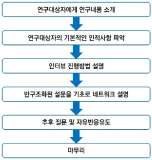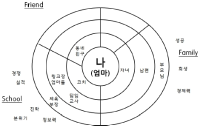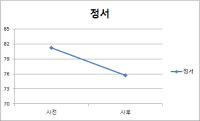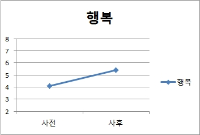Purpose The purpose of this study is to investigate the factors for setting proper training duration of frequency that can guarantee the student athletes' right to study and performance, and to derive the ranks of setting proper training duration of frequency of student athletes by school level. Consequently, to provide basic data for the development of training guidelines for the growth period of Korean student athletes. Methods Delphi and Analytic Hierarchical Process(AHP) techniques were used. The Delphi survey was conducted in three phases, and collected data through Delphi survey were computed by SPSS win ver. 22.0 and Excel, using the mean, standard deviation, median, and coefficient of variation. Using the AHP technique, we classified the factors for setting proper training duration of frequency derived through Delphi survey, and calculated the importance by using Microsoft Excel 2010. Conclusion First, elementary students should be guaranteed regular class participation, have basic after school training, and be provided with adequate rest so that they do not lose interest in the exercise. Second, middle school students are required to decide whether to continue exercise based on their ability to exercise and abundant experience. Therefore, when abandoning the exercise, students should be able to faithfully carry out their academic performance. Third, high school students are directly related to college entrance and employment, so they have to concentrate on performance rather than on academic performance.
Purpose This study conducted legal, institutional and pedagogical consideration on C0rule in Korean collegiate sport. Methods (1) Systematically examined the unconstitutional elements of C0rule in terms of the basic rights of student-athletes, and (2) reviewed pedagogical validity in terms of higher education, college credit system and physical education. Results First, C⁰rule adopted the result (the credit) of the uniform education as the standard of sanctions. Providing discriminatory educational opportunities according to academic credit is regarded as the infringement of equal rights. Second, since the college sports league is the only place to prepare for vocational education and employment for student-athletes, restricting their opportunities according to the credit is also against the freedom of happiness and choice of profession. Third, C0 credit, the minimum standard, overlooked purpose and level of higher education and rigorous evaluation. Last, C0rule has resulted in overlooking the academic significance and status of college education, especially physical education. Conclusions This study is meaningful in that it brought the subjects to discourse field and provided opportunities to review the fundamental problem of the school sport and the basic rights of student-athletes. At the present stage of the transition of the school sport system due to the introduction of various regulatory systems, we should be careful about oligopoly and unilateral flow of knowledge and production of other alienation.

Purpose The purpose of this study was to investigate how the educational zeal of mothers with winter sports students in secondary schools appears on the network charts. Methods It lasted 28 days from February 6 to March 5, 2017. Starting with a description of the QNA, all interviews were recorded on a tape recorder to carry out the project. Data analysis were divided into four areas(Family, Friend, School, etc.) and 13 associative words(enthusiasm, intelligence, performance, entry, success, sacrifice, atmosphere, polarity, competition, vicarious, satisfaction, economic power, anxiety, stress) to attach associative word stickers according to color. Results As a result of inducing arbitrary interpretation of the network subject's educational network, it was possible to analyze the factors affecting mothers' sports education in three dimensions. In addition, although there is not much difference in areas around "I" on sports education charts, the distance between associative words and network charts has gradually moved away from the same person as their children go on to school. Conclusions The methodological significance of this study has been found to be very useful in visualizing an individual's educational network by utilizing qualitative network analysis and in understanding the characteristics associated with education.







Purpose The purpose of this study was to examine the effects of positive psychological intervention program on mood state, self-esteem and happiness of university student athletes. Methods The participants were 10 university student athletes. The measures utilized the Profile of Mood States(POMS), self-esteem inventory and happiness questionnaire. Positive psychological intervention program was developed by previous studies, participants interview and expert discussion. The positive psychological intervention program were managing life, self-esteem enhancing program, being optimistic, positive emotion program, gratitude, forgiveness, communication skill training program, habit/routine making program and action strategy development. The data were analyzed by SPSS 20.0. Results These results were as followings. Firstly, positive psychological intervention program decreased total mood disturbance(TMD) of university student athlete. Secondly, positive psychological intervention program improved self-esteem of university student athletes. Lastly, positive psychological intervention program increased happiness level of university student athletes. Conclusion Training and education system should be established in which a positive psychological intervention program can be applied to university student athletes.




The purpose of this study was to evaluate the physical performance and develop the criteria of 4243 middle and high school students across 5 provinces (Busan, Gwangju, Daejeon, Gyeongi and Jeonbuk) in Korea that took part in the talent development project. The data was collected between 2011 and 2014. The criteria was divided by gender and age across different grades, and the mean, standard deviation and 5 evaluation levels were calculated and analyzed.



PURPOSE This study examined the effect of sports life skills and life skills transfer of student-athletes and coaches, applying Actor-Partner Interdependence Model (APIM). METHODS Korean student-athletes and coaches from middle and high school sports teams participated in this study. There were 300 student-athletes (Mage=15.44, SD=1.64; male=218, female=82), with an average of 5.46 (SD=2.40) years of athletic career. Meanwhile, 33 coaches were (Mage=39.70, SD=8.36; male=26, female=7), with an average of 13.52 years of coaching career (SD=10.01). Measures included the Life Skills Scale for Student-Athletes (LSSSA; Jang et al., 2020) and Korean Life Skills Transfer Survey (KLSTS; Lim et al., 2018). Descriptive analysis, correlation, and APIM were undertaken by using the SPSS and AMOS programs. RESULTS First, the correlation between athletes’ and coaches’ life skills was not significant. Second, athletes’ life skills significantly affected their life skills transfer, similar to coaches’ life skills significantly affecting their life skills transfer. Fourth, coaches’ life skills did not significantly influence athletes’ life skills transfer, and the converse was not true either. CONCLUSIONS This study verified the effect of life skills development for two groups of athletes and coaches, on transfer in sports, and attempted statistical verification of whether it affects sports life skills and transfer between athletes and coaches. Although no statistically significant results were found in the partner effect, it is meaningful in that, it provided important implications for conducting a follow-up study on the relationship between athletes and coaches. In other words, it is expected to be a cornerstone for research on building a new model, along with investigating the interactive relations between athletes and coaches on life skills in the sports field.
PURPOSE The purpose of this study is to explore the effects of the student-athlete and student peer mentoring program as a collegiate class. METHODS The peer mentoring program, conducted at A University in the first semester of the 2023 school year, was evaluated using practical action research (Zuber-Skeritt, 1996). RESULTS In the introduction stage, ‘relative and absolute evaluation’, ‘member ratio’, and ‘definition of professor role’ were categorized as challenge issues. In the progress stage, ‘de-formalized lecture method’, ‘student athlete’s coaching experience’, and ‘student’s experience of football culture’ were discovered as possibilities, while ‘vacancy and absence of mentor-mentee’, ‘limited group activities and limitations of team sports’, and ‘lack of objective evaluation’ required improvement. At the end stage, student-athletes experienced changes in values such as self-identity, football, and human relationships, as well as quantitative and qualitative changes in sports participation. CONCLUSIONS This study confirmed the potential of the peer mentoring program as a collegiate class as well as its practical significance for guaranteeing student-athletes' learning rights and for forming sports culture on collegiate campuses.
Purpose The purpose of this study is to deeply understand what high school student athletes are doing as athletes and how they are transformed into student athletes from studying and exercising simultaneously. Through this, to understand the life of student wrestlers and to provide basic data for rational improvement of school athletic department. Methods Participants of the study selected one student in the second grade and two students in the third grade at Woosu high school in metropolitan. Data was collected through in-depth interviews, participant observation, and document analysis. The collected data was analyzed using Domain Analysis and Taxonomic Analysis by Spradley(1979). To assure the credibility of the data, additional checks and analysis were conducted with the participants, and the research process was examined by experts. Moreover, the common contents of the data were included in the research results with multilateral verification. Results Woosu high school wrestling student athletes were recognized as athletes as a training life to lose their dreams, a school life to stop their work. However, since student athletes have been studying and exercising together, they have been transformed from a trainee to a motivated active, a student who is reborn in the school community, and transformed a reflective student athlete to an immature player on a daily life. Conclusion The policy of the school athletic department to study and exercise together has a positive effect on student athletes and has a good effect. The introduction and practice of this system can expect true student athletes and establish elite physical education right away.
PURPOSE This study aimed to examine contemporary sports reality and its problems through the feature-length independent film <Not Out>, which focused on baseball, a popular sport, and highlighted its rather dark side. METHODS The researcher performed a textual analysis using the perspective of critical theory. RESULTS Gwang-ho was the hero of a walk-off hit in the national baseball competition final, who suffered from three career strikes during his third year of high school and thought that he had bright future ahead of him. Before the amateur draft, Gwang-ho boldly rejected the proposal of a trainee contract from a professional team (strike 1), then he was subsequently not selected in the amateur draft (strike 2), before he applied for the college entrance examination for baseball specialties, and was eventually rejected. (strike 3) In the end, he was able to enter college through a bribe given by his father (not-out situation). CONCLUSIONS <Not Out> is a film based on a true story, and it showcased the realities of elite sports by revealing the dynamics of society and school, where the main character responded with reluctance and indifference. This movie highlighted the realities of delinquency, violence, abusive language, bribe, and violations of the right to learn and how these have continued to evade the law despite being thought to be gone.
Purpose The purpose of this study is to examine the socio-cultural background and the current issues of camp training system. This work could find the reason why camp training is continuing despite the regulatory policy. Methods This study compared past national and social situation, sports and education policies of each government, and the changes of sports paradigm through literature review. Results The settlement background of camp training system was explained by the national situation in 1970s and the elite sports policy. However, after the political democratization, the human rights ideology as universal value has developed, and the anti-human rights system which individuals sacrifice for the realization of community became not free in the school sports. Especially, since the 2000s, various social problems caused by camp training have been discussed and the school sports system is undergoing transition under various regulation. In this process, the conflict between the policy makers and the subjects is intensifying. The partial regulation, rather than radical reform, has been the cause of conflict without resolving 'the remnants of past elite sport policy'. The current regulation is limited to the "partial regulatory system", omitting fundamental changes such as the revision and abolition of the student-athletes' college entrance system. Conclusion This study presented two issues to normalize school sports. First, it is necessary to discuss the revision or abolishment of the student-athletes' college entrance system. Second, the existing school athletic system should be transformed into a future-oriented club system. By solving these problems, we can expect the policy effectiveness of current regulation and it will be able to reach the future that the regulatory policy are aiming at.